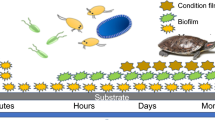Abstract
The impact of the hydrophilic and hydrophobic CaO nanoparticles (CaOnp) and the techniques used to deposit them on glass and silicone rubber (PDMS) substrates was investigated. The purpose of this study was to ascertain the impacts of all variables relevant to deposition methods and interactions between nanoparticles and substrates on the hydrophobicity and wettability of surface materials. In order to assess the properties, dipping, spraying, and drop-pipetting methods were used in the deposition of the samples. The microstructure, contact angle hysteresis (CAH), and static contact angle (SCA) measurements were utilised. The findings show that the hydrophobic CaO nanoparticles and the PDMS substrate that interacted synergistically produce more beneficial hierarchical topologies with reduced surface energy, PDMS surfaces were developed utilising the spray deposition approach in combination with hydrophobic CaO nanoparticles, and both horizontal and vertical drying procedures satisfy the two criteria for a self-cleaning surface and superhydrophobic.







Similar content being viewed by others
Data availability
The authors confirm that the data supporting this study’s conclusions is included in the publication.
References
Aigbodion VS (2022) Enhancement of the insulating properties of epoxy based nanocomposites induced with SiO2 nanoparticles derived from rice husk for high-voltage application. Emergent Mater 5:1717–1728. https://doi.org/10.1007/s42247-022-00401-y
Sethi SK, Manik G (2018) Recent progress in super hydrophobic/hydrophilic self-cleaning surfaces for various industrial applications: a review. Polymer-Plastics Technology and Engineering, 1–21. https://doi.org/10.1080/03602559.2018.1447128
Ahmad Kamal SA, Ritikos R, Abdul Rahman S (2021) Enhancement of self-cleaning properties and durability of super-hydrophobic carbon nitride nanostructures by post-annealing treatment. Surf Coat Technol 409:126912. https://doi.org/10.1016/j.surfcoat.2021.126
Mohamadreza B, Farzam M, Pesika NS (2022) Langmuir 38(6):2132–2136 https://doi.org/10.1021/acs.langmuir.1c03206
Mendoza AI, Moriana R, Hillborg H, Strömberg E (2019) Super-hydrophobic zinc oxide/silicone rubber nanocomposite surfaces. Surf Interfaces 14:146–157. https://doi.org/10.1016/j.surfin.2018.12.008
Pierce E, Carmona F, Amirfazli JA (2008) Understanding of sliding and contact angle results in tilted plate experiments. Colloids Surf A: Physicochem Eng Aspects 323:73–82
Masayo M, Yang Y, Yasuda T, Okuno T, Hirotsugu K (1997) Yasuda Static and dynamic contact angles of water on polymeric surfaces. Langmuir 13:5494–5503
Masashi M, Nakajima A, Fujishima A, Hashimoto K, Watanab T (2000) Effects of the surface roughness on sliding angles of water droplets on superhydrophobic surfaces. Langmuir 16:5754–5760
Elbourne A, Crawford RJ, Ivanova EP (2017) Nano-structured antimicrobial surfaces: from nature to synthetic analogues. J Colloid Interface Sci 508:603–616
Mohamed AMA, Abdullah AM, Younan NA (2015) Corrosion behavior of superhydrophobic surfaces: a review. Arab J Chem 8:749–765
Féat A, Federle W, Kamperman M, van der Gucht J (2019) Coatings preventing insect adhesion: an overview. Prog Org Coat 134:349–359
Prianka TR, Subhan N, Reza HM, Hosain MK, Rahman MA, Lee H, Sharker SM (2018) Recent exploration of bio-mimetic nanomaterial for potential biomedical applications. Mater Sci Eng, C 93:1104–1115
Nguyen-Tri P, Tran HN, Plamondon CO, Tuduri L, Vo D-VN, Nanda S, Mishra A, Chao H-P, Bajpai AK (2019) Recent progress in the preparation, properties and applications of superhydrophobic nano-based coatings and surfaces: a review. Prog Organ Coat 132:235–256
Fihri A, Bovero E, Al-Shahrani A, Al-Ghamdi A, Alabedi G (2017) Recent progress in superhydrophobic coatings used for steel protection: a review. Colloids Surf, A 520:378–390
Tian H, Wang F, Ge S, Ou J, Li W, Yu S (2016) A simple and effective way to fabricate mechanical robust superhydrophobic surfaces. RSC Adv 6:28563–28569
Bao X-M, Cui J-F, Sun H-X, Liang W-D, Zhu Z-Q, An J, Yang B-P, La P-Q, Li A (2014) Facile preparation of superhydrophobic surfaces based on metal oxide nanoparticles. Appl Surf Sci 303:473–480
Cao M, Guo D, Yu C, Li K, Liu M, Jiang L (2016) Water-repellent properties of superhydrophobic and lubricant-infused “slippery” surfaces: a brief study on the functions and applications. ACS Appl Mater Interfaces 8:3615
Zhang X, Guo Y, Zhang Z, Zhang P (2013) Self-cleaning superhydrophobic surface based on titanium dioxide nanowires combined with polydimethylsiloxane. Appl Surf Sci 284:319–323
Xue C-H, Zhang Z-D, Zhang J, Jia S-T (2014) Lasting and self-healing superhydrophobic surfaces by coating of polystyrene/SiO2 nanoparticles and polydimethylsiloxane. J Mater Chem A 2:15001–15007
Sani Mohammed A, Onyekachi AF, Aigbodion VS (2022) Ecofriendly new nanocomposites coating formulation of zinc reinforced with calcium oxide nanoparticles synthesis from oyster shell. J Indian Chem Soc 99(8):100609
Adams SM, Onyekachi AF, Aigbodion VS (2023) High-performance multi-response optimization of new nanocomposite coating formulation of zinc reinforced with calcium oxide nanoparticle synthesis from oyster shell via one-step electrodeposition approach. Emergent Mater. https://doi.org/10.1007/s42247-023-00458-3
Ebert D, Bhushan B (2012) Transparent, superhydrophobic, and wear-resistant coatings on glass and polymer substrates using SiO2, ZnO, and ITO nanoparticles. Langmuir 28:11391
Acknowledgements
The authors hereby appreciate and acknowledge the Africa Centre of Excellence for Sustainable Power and Energy Development, ACE-SPED, University of Nigeria, Nsukka; Energy Materials Research Group, University of Nigeria, Nsukka, Nigeria; and Faculty of Engineering and Built Environment, University of Johannesburg, Auckland Park, South Africa, for their support.
Author information
Authors and Affiliations
Contributions
They contribute 100% to the study work’s development, from experimentation to analysis.
Corresponding author
Ethics declarations
Ethics approval
Because this experiment does not involve people or animals, no ethics committee approval is required.
Consent to participate
Because this study does not include people or animals, no permission is required to participate.
Consent for publication
The authors give the publisher the consent to publish the work.
Competing interests
The authors declare no competing interests.
Additional information
Publisher's note
Springer Nature remains neutral with regard to jurisdictional claims in published maps and institutional affiliations.
Rights and permissions
Springer Nature or its licensor (e.g. a society or other partner) holds exclusive rights to this article under a publishing agreement with the author(s) or other rightsholder(s); author self-archiving of the accepted manuscript version of this article is solely governed by the terms of such publishing agreement and applicable law.
About this article
Cite this article
Olisakwe, H.C., Bam, S.A. & Aigbodion, V.S. Impact of processing parameters on the superhydrophobic and self-cleaning properties of CaO nanoparticles derived from oyster shell for electrical sheathing insulator applications. Int J Adv Manuf Technol 128, 4303–4310 (2023). https://doi.org/10.1007/s00170-023-12173-8
Received:
Accepted:
Published:
Issue Date:
DOI: https://doi.org/10.1007/s00170-023-12173-8




